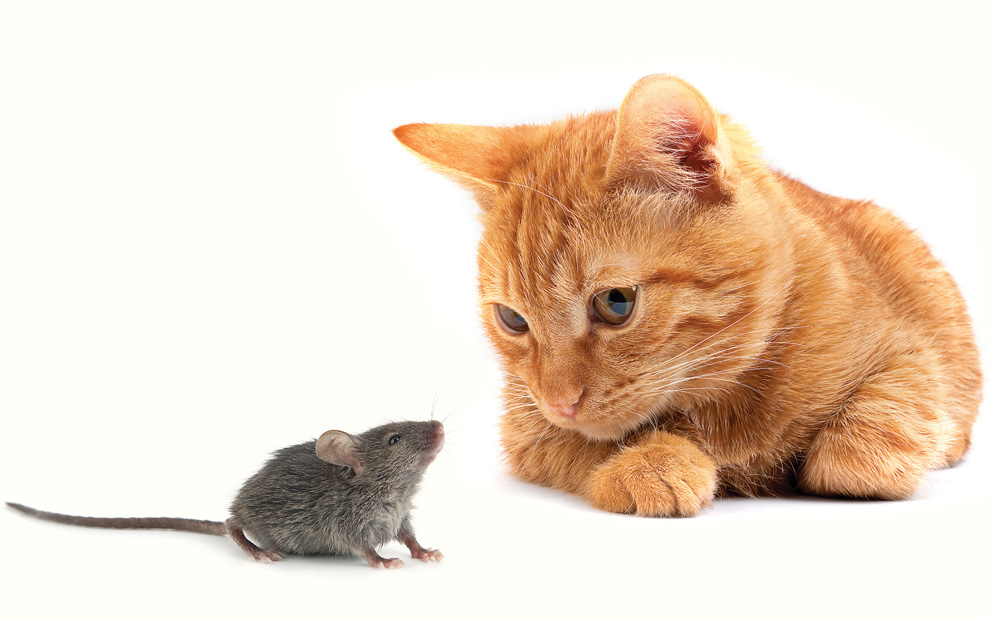You hear a lot about working dogs – military dogs, police dogs, assistance dogs, herding dogs, guard dogs, therapy dogs. Everyone knows that many dogs have a job to do, and they’re so good at whatever they’re trained to do. But what about cats?
Yes, there are working cats! Jobs for cats differ from jobs for dogs because they are largely related to the cat’s natural abilities. Unlike dogs, cats are not all that eager to please us. We can teach a dog nearly anything because of their desire to make us happy, but cats are not so willing. Their motivation is to do something only if it’s worth their while.
Let’s take a look at some of the jobs cats are really good at:
Rodent Control
What could be more natural for a cat than rodent control? Hunting vermin is a natural instinct for a cat, although, training or owning a cat for the purpose of being a mouser or ratter is somewhat controversial. The argument is that it’s just not healthy for the cat. Cats who hunt vermin are not only vulnerable to diseases carried by rats, but can also be susceptible to fleas and ticks that a rat most certainly will have. Also, if a mouse or rat has ingested poison, and the cat eats the rat, the cat, too, will be affected by the poison.
That said, a cat that hunts is a much happier cat. If those impulses and desires are not appeased, inappropriate behavior can result, such as shredding the curtains or ankle attacks. Also, as hard as it is for us to accept, cats enjoy stalking, chasing, and hunting.
Therapy
When raised with love and handled regularly as kittens, adult cats will often seek attention and affection in others. Just like therapy dogs, a therapy cat helps people struggling with physical and emotional difficulties. Obviously, cats are not able to assist people with disabilities – as in guiding, retrieving items, providing physical support, and those types of things, but they are experts in calming and lowering blood pressure. Even the vibration of their purring is healing and comforting.
Therapy cats are found in nursing homes, rehab centers, hospitals, and more. Many of these cats just happen to be in the right place at the right time and thus earned the right to be considered therapy animals; however, cats can actually be professionally trained and certified. Pet Partners, the nation’s leading organization of registered therapy animals, has 200 registered therapy cats.
Stress Reduction
PetMD tells the story of an IT company in Japan that has an office cat policy in place. They actually encourage employees who own cats to bring them to work to help relieve anxiety and create a less stressful work environment. Employers are quickly learning that cats, as well as other animals, successfully reduce workplace stress.
Cats have also been used to help reduce the inevitable tension in some US prisons. Cats in prisons tend to reduce anger, lower aggression, and can generate more gentle behavior among people in the justice system. FORWARD (Felines and Offenders Rehabilitation with Affection, Reformation, and Dedication), a program at Indiana’s maximum-security Pendleton Correctional Facility, began in April 2015. In the program, shelter cats get loving homes and make a real difference in the lives of many incarcerated people.
Acting
I’m sure you can think of a few cats you have seen on TV or in the movies: “Bleeker” from Gone Girl, “Mr. Bigglesworth” from Austin Powers, “Goose” in Captain Marvel, “Sassy” from Homeward Bound. And who can forget Morris, the finicky cat from the 9Lives cat food commercials?
Cats have been working in Hollywood since nearly the beginning of film-making itself. It all started when a little kitten crawled up through the floorboards of a movie studio during a film. The director loved it and decided to leave it in the movie. How adorable! That particular cat went on to do several films in the next few years. These days, feline talent agencies are very well staffed with skilled and experienced cat actors.
Listening
At the Richmond SPCA, kids of all ages can visit the humane center and read to pets in the adoption lobby. Reading to shelter pets is a unique way to provide interaction and enrichment to cats (and dogs and the occasional bunny). Kids can bring a book or select one from their collection. For young readers, practicing reading skills with cat audiences increases motivation to read, develops self-confidence, and improves fluency. There is no judgment with this unbiased audience, and all reading skill levels are welcome. The experience also helps foster compassion and involvement in animals’ lives and makes reading more fun for rookie readers. Repeat visitors will earn a special treat from the Richmond SPCA.
Tales for Tails (the official program) is available whenever the adoption center is open. Visit richmondspca.org for hours. Please check in with the front desk upon arrival and an adoption counselor can point you toward the book collection and the best pets to read to.
The thing is, cats are lucky and loved! As far as humans are concerned, cats don’t have to work to earn their keep. Despite their aloofness and pretension, most of us are just happy to have them as companions in our lives.





